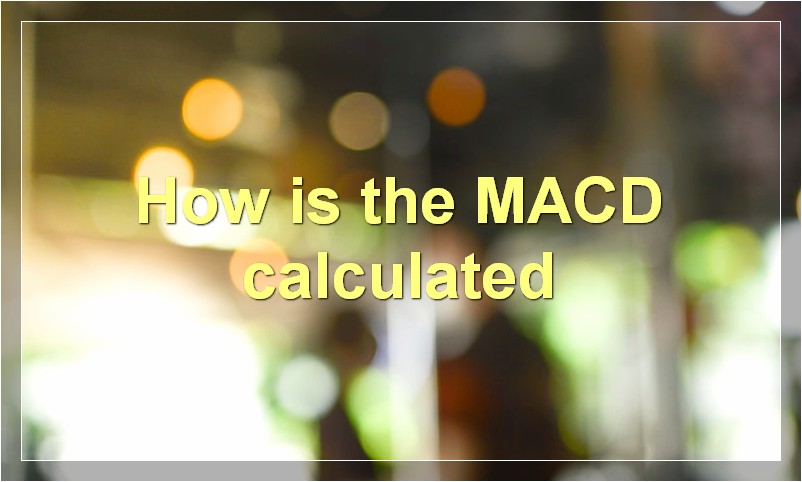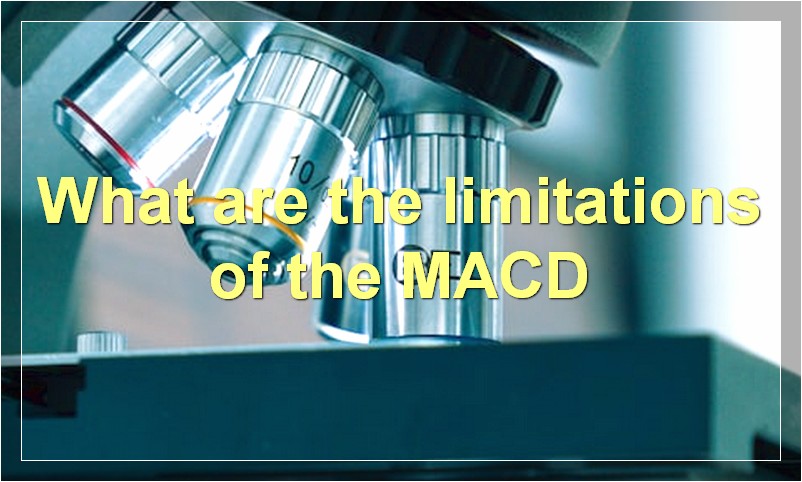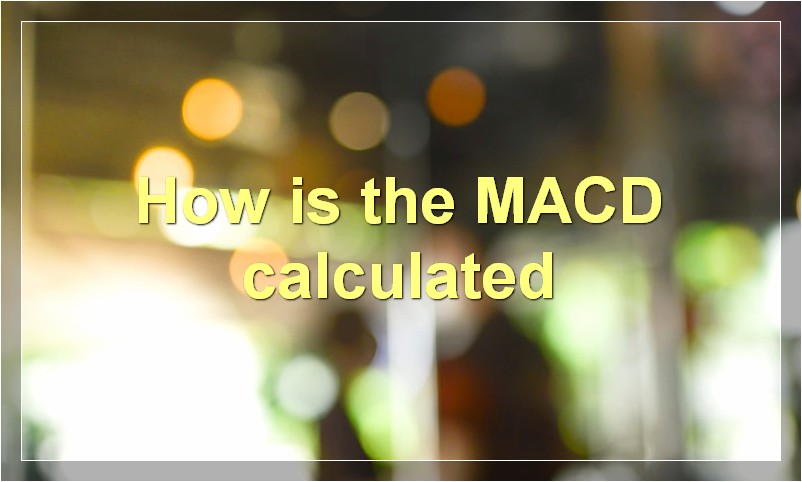If you’re a day trader, then you know the MACD indicator is essential to your success. But what is the MACD indicator and how do you use it? In this article, we’ll give you everything you need to know about the MACD indicator.
What is the MACD
The MACD is a technical analysis indicator that shows the relationship between two moving averages of prices. It is calculated by subtracting the 26-period Exponential Moving Average (EMA) from the 12-period EMA. The resulting line is then plotted on a chart along with a signal line, which is a 9-period EMA of the MACD line. MACD signals are used to identify trend changes and possible buy or sell opportunities.
How is the MACD calculated

The MACD is calculated by subtracting the 26-day exponential moving average (EMA) from the 12-day EMA.
What do the MACD lines represent
The MACD lines represent the difference between the 26-day and 12-day exponential moving averages. The MACD histogram represents the difference between the MACD line and the signal line.
How can the MACD be used to identify trading opportunities
The MACD is a technical indicator that can be used to identify trading opportunities. It is based on the difference between the moving average of the stock price and the 26-day exponential moving average of the stock price. A buy signal is generated when the MACD line crosses above the signal line, and a sell signal is generated when the MACD line crosses below the signal line. The MACD histogram can also be used to generate buy and sell signals. A buy signal is generated when the histogram turns positive, and a sell signal is generated when the histogram turns negative.
What are some common MACD signals
There are three primary signals that are generated by the MACD indicator. These signals are:
1) The MACD line crossing above the signal line – This indicates a bullish trend is emerging and prices are likely to rise.
2) The MACD line crossing below the signal line – This indicates a bearish trend is emerging and prices are likely to fall.
3) The MACD histogram crossing above the zero line – This indicates rising momentum and prices are likely to continue to move higher.
The MACD indicator can also be used to generate trade signals. A buy signal is generated when the MACD line crosses above the signal line. A sell signal is generated when the MACD line crosses below the signal line.
What are the limitations of the MACD

The MACD is a great indicator for trend following and momentum, but it does have some limitations. First, the MACD is lagging, meaning it will give you signals after the fact. This isn’t necessarily a bad thing, as it can still be useful in identifying trends, but it’s something to be aware of. Second, the MACD is prone to false signals in choppy markets. This means that during periods of market consolidation or range-bound trading, the MACD may give you signals that don’t actually lead to anything. Finally, the MACD is a purely technical indicator, so it doesn’t take into account any fundamental factors that may be affecting the price of a security.
How can MACD be combined with other technical indicators
MACD is a technical indicator that can be used to identify trends and momentum in the market. It can be combined with other technical indicators to provide a more complete picture of the market.
For example, MACD can be combined with moving averages to help identify the direction of the trend. MACD can also be used with support and resistance levels to help confirm breakouts or reversals in the market.
When combining MACD with other technical indicators, it is important to use indicators that complement each other. For example, MACD is a momentum indicator, so it may be combined with an oscillator such as the Relative Strength Index (RSI). This combination can help identify overbought or oversold conditions in the market.
MACD can also be used as a leading indicator, which means it can give signals before other indicators. For example, MACD may give a buy signal before price starts to move up. This is because MACD identifies changes in momentum, which can lead to price changes.
The bottom line is that MACD is a versatile technical indicator that can be used in conjunction with other indicators to provide a more complete picture of the market. When used correctly, MACD can help you make better trading decisions.
Is the MACD reliable
There are a lot of people who swear by the MACD, and there are a lot of people who think it’s complete garbage. The truth probably lies somewhere in the middle. The MACD is a momentum indicator that uses moving averages to measure buy and sell signals. It’s a popular indicator because it’s easy to use and interpret. However, like all indicators, it has its flaws. One big flaw is that it’s based on historical data, so it doesn’t take into account future events that could impact the price of a security. Another flaw is that it’s lagging, which means that by the time a signal is generated, the move might already be over. Despite its flaws, the MACD is still a widely used indicator, and it can be a helpful tool for traders.
What role doesMACD play in technical analysis
MACD is a technical analysis tool that stands for Moving Average Convergence Divergence. MACD is used to measure the momentum and trend of a stock or other security. The MACD line is calculated by subtracting the 26-day exponential moving average (EMA) from the 12-day EMA. The signal line is the 9-day EMA of the MACD line. MACD histograms are used to predict turning points in the market.
What is the history of the MACD indicator
The MACD is a technical analysis indicator created by Gerald Appel in the late 1970s. Appel originally intended for the MACD to be used as a trend-following indicator, but it has since become popular among traders for its ability to identify momentum changes in the market.
The MACD is calculated by subtracting the 26-day exponential moving average (EMA) from the 12-day EMA. A nine-day EMA of the MACD, called the “signal line”, is then plotted on top of the MACD line, which can be used as a trigger for buy and sell signals.
MACD is one of the most popular technical indicators used by traders today. It can be used in conjunction with other technical indicators, such as support and resistance levels, to help confirm trading signals.

